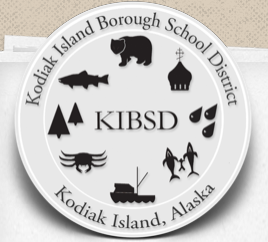Nicole Fuerst, Statewide Distance Learning Professional Development Coordinator for KIBSD and AKTEACH
Nicole has been a Virtual Teacher for Kodiak Island Borough School District since 2012. Her previous work experience includes teaching High School English and Technology for Annette Island School District and Dillingham City School District. Nicole is the QM Coordinator for the Kodiak Island Borough School District.

“Quality Matters has become a necessary framework for how we think about course design for our distance learning program,” said Nicole Fuerst, Statewide Distance Learning Professional Development Coordinator, Alaskans Transforming Educational Access in Communities and Homes (AKTEACH). “How we look at and approach distance learning and course design was changed thanks to Quality Matters.”
The Kodiak Island Borough School District (KIBSD), in close cooperation with its diverse island community, exists to provide an educational program of the highest standard that empowers all learners to achieve personal and academic excellence. KIBSD started to offer distance, blended and online courses starting in 2004 and began implementing a full array of digital learning in 2008. “We wanted to ensure that our rural schools students were receiving quality instruction from highly qualified content experts,” Nicole remembered.
AKTEACH, a homeschool and educational services program within KIBSD, serves hundreds of students across the state; Kodiak Island Borough School District’s synchronous distance program serves about 50 students. The district offers purchased content suites with a variety of course choices and its distance learning synchronous program offers 11 classes to students.
The Journey to Digital Learning
Nicole’s experience in digital learning began in 2003. “My entire teaching experience has been in Alaska Native Rural Education,” she said. “I began using Moodle for professional collaboration and, in 2007, began using an LMS to create a blended learning experience for my students,” she continued. “I focused much of my time on developing content for blended learning physical classroom courses.”
Early QM Implementation
Nicole moved to Kodiak in 2012 to be a virtual/distance teacher. “The medium through which I taught changed but my course development methods remained the same until I became a teacher mentor for KIBSD distance learning teachers.” She soon realized, in conjunction with fellow educator Anthony White, that Quality Matters would make a difference in helping teachers develop distance learning courses.
KIBSD made QM part of its quality assurance processes when AKTEACH/KIBSD received an Alaska Digital Teaching Initiative grant. “We were finally able to start training staff members in Quality Matters,” Nicole said. As Nicole completed courses on course design and delivery during her studies, she learned about the K-12 Secondary Rubric General Standards. “I learned about Quality Matters at part of my pursuit of a Master's Degree in Educational Technology, was inspired by QM’s basic ideas and felt compelled to share it with the teachers I mentored.”
Costs related to implementing and sustaining QM are low. “Thanks to the Alaska Digital Teaching Initiative (DTI) grant we have been able to train our core team, which entails a few hundred dollars per person per course,” Nicole reported.
Implementation Challenges
“Time seems to be a challenge; everyone is busy and everyone feels stretched so creating value in the training to devote the time to a task requires that we draw a line in the sand and say, ‘this is valuable’," Nicole said when asked about challenges related to implementing QM. “Once a learner does that, anything is possible.”
Nicole recommends taking it easy with educators unfamiliar with QM to lay the groundwork for future success. “Starting slow, creating activities in which they immediately feel successful and providing time for discussion and collaboration help foster success,” she emphasized.
Successes and Quality with QM
“Quality Matters has helped our core team apply the concepts outlined in its K-12 Secondary Rubric in everything we design and do with KIBSD teachers and around the state,” Nicole said. “Our distance learning teachers are beginning slowly with focusing on designing and aligning learning objectives for their courses.”
Nicole reported that educators responded well when offered opportunities to improve their courses with QM’s learning opportunities and also received constructive feedback. “We have had a great response in distance teachers working with the Rubric and even teaming up with teachers in distance learning from Lower Kuskokwim School District,” she reported. “The goal of online learning is to bring students and teachers together for an educational experience, no matter where they are.”
QM’s learning opportunities have helped create an environment in which educators in the KIBSD can learn to make best use of the tools QM provides to improve course quality. “We’ve taken the K-12 Applying the QM Secondary Rubric workshop and K-12 Online Course Design workshop and the K-12 Reviewer Course,” Nicole reported. "Additional team members are in the process of completing the K-12 Online Course Design workshop.”
As QM becomes the standard for online and blended course design for the district, there may be opportunities to show learners how QM helped improve their courses’ design. “We’re not at that point yet but we train our virtual learners via a Virtual Learning Bootcamp every fall; we could potentially expose them to QM in the future,” she said.
Future Learning and Growth with QM
Kodiak Island Borough School District plans to continue implementing QM and offer quality courses to its learners. “We will continue to build our Quality Matters knowledge and skills and look to expand training in the district,” Nicole said. “We are getting to a place where we can start standardizing course design and have a common language to use as collaborative colleagues.”
